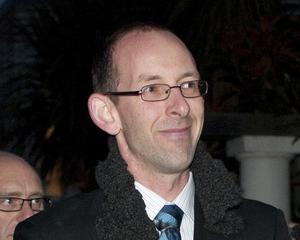Whoever killed Laniet Bain pushed the rifle firmly down on top of her head before firing, a Wellington forensic pathologist with 30 years' experience told the Bain murder trial in Christchurch today.
His reason for believing it was a hard contact wound was the bruising to Laniet's scalp and the larger size of the entry wound, consultant Kenneth Thomson said.
The effect of the hard contact was the gas ''and everything'' from the rifle would go in through the wound which was why that wound was different from the two others to Laniet's head, he told Justice Panckhurst and the jury.
Dr Thomson is the second of three pathologists the Crown is calling in the retrial of 37-year-old David Cullen Bain for the 1994 murders of his parents, two sisters and younger brother at the family's Every St home in Dunedin.
Bain denies the killings. He says he returned from his early morning paper round and found his family all dead. His defence is his father killed the others then committed suicide.
But the Crown says David Bain shot all five and tried to make it look like his father was responsible.
In his evidence to Justice Graham Panckhurst and the jury in the High Court in Christchurch today, Dr Thomson said he believed the initial wound - a fairly close range shot - was the one to Laniet's left cheek.
That was not going to be fatal. And while he could not be sure of the order of the next two shots above her left ear and to the top of the head, either of which would have killed her, he believed the final shot was the one to the top of Laniet's head.
By comparison, the shot to Robin Bain's left temple appeared in his opinion to be an intermediate wound, the weapon having been fired from up to 20cm away.
Dr Thomson has completed his evidence in chief and will return next Wednesday to be cross-examined.





